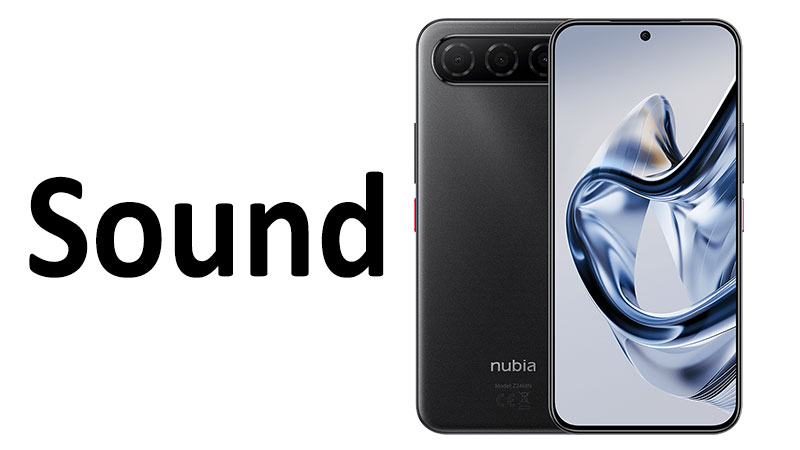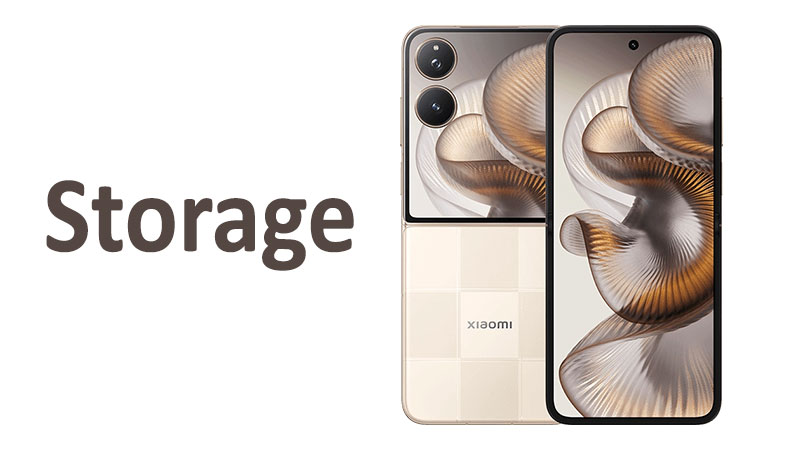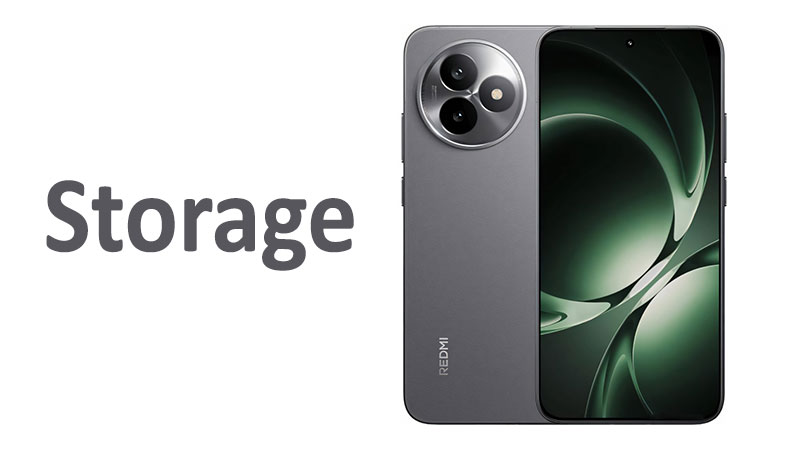The ZTE nubia Air Sound experience is a key feature for this ultra-light device. Audio quality is increasingly important for consumers selecting a modern smartphone. Users now demand clear, powerful built-in speakers for all their media. Furthermore, they expect flawless support for high-resolution audio files. This detailed review explores every aspect of the ZTE nubia Air’s audio system meticulously. We will examine the unique hardware configuration and the specialized software processing. Understanding these elements is essential for maximizing the device’s multimedia potential. This analysis helps potential buyers determine if the sound quality meets their specific expectations.
The Acoustic Hardware and Design
The ZTE nubia Air features a carefully designed stereo speaker system. This setup is crucial for delivering an engaging multimedia experience. The speakers are strategically placed and tuned for optimal acoustic output. ZTE dedicated significant resources to tuning this hardware for clarity. This ensures consistent performance across music, gaming, and video content. The “Air” branding suggests a focus on thinness. This design constraint requires innovative engineering to maintain sound quality effectively.
Speaker System Configuration
The nubia Air utilizes a dual-speaker configuration for true stereo separation. This arrangement is standard for flagship and high-end devices. One speaker is positioned in the earpiece grille at the top of the display. This driver acts as the primary left channel speaker. The second speaker is located on the device’s bottom frame. This second driver delivers the corresponding right channel audio output. This setup creates a wide and highly effective soundstage. It significantly enhances the immersion when consuming video content.
Design Choices and “Air” Constraints
The “Air” designation implies a slim, lightweight device design. Thin phone chassis designs present significant challenges for speaker engineers. Larger speaker chambers typically produce better bass response. Engineers must use clever internal routing and dampening to compensate for small chambers. The nubia Air likely employs high-density speaker materials. These materials help maximize excursion within a limited physical space. This careful design minimizes internal vibration transfer to the phone’s sleek chassis. Consequently, this isolation helps preserve sound clarity even at higher volume settings.
Internal Amplification and DSP
The device relies on a modern, high-efficiency Smart Power Amplifier (Smart PA). This component is crucial for managing the speakers effectively. The Smart PA actively monitors the speaker output in real time. It prevents the drivers from being overdriven, which prevents clipping. This also ensures the speakers operate at peak efficiency. The phone’s main processor includes a dedicated Digital Signal Processor (DSP) block. This DSP handles complex tasks like equalization and dynamic range compression. This specialized hardware ensures fast audio rendering. It provides consistent and predictable sound output across all media types.
Specialized Comparison: Speaker Design vs. Previous Models
Older nubia models, particularly those focused on gaming, sometimes used larger, non-symmetrical speakers. This often led to incredibly loud but less balanced sound. The ZTE nubia Air prioritizes balance and clarity over sheer, raw volume. Its stereo system offers a more accurate stereo image than previous, gaming-focused iterations. While the nubia Air may not achieve peak volume as high as its thicker predecessors, it maintains better sound integrity. This focus shift makes it superior for casual listening and cinematic content.
Acoustic Performance and Sound Signature
A thorough sound quality review must examine the full spectrum of frequencies. Excellent audio requires balanced, articulate bass and clear midrange and treble. The ZTE nubia Air aims for a neutral-to-slightly-warm sound profile. This tuning is designed to be versatile for various types of content. The acoustic performance meets high expectations for a premium, thin device.
Frequency Response Breakdown: Bass
The bass performance on the nubia Air is surprisingly well-controlled for a thin phone. It provides sufficient low-end presence for impactful modern music. The bass frequencies remain tight and articulate. Importantly, the bass avoids bleeding into the critical midrange area. This prevents the sound from becoming muddy or undefined. The specialized acoustic chambers, though small, help maximize the perceptible bass response. The Smart PA actively manages low frequencies to avoid distortion.
Frequency Response Breakdown: Mids
The midrange frequencies are particularly strong and detailed on this device. The clarity of the midrange is crucial for vocal performance and dialogue. Vocalists sound full, rich, and naturally textured on the nubia Air. Instrumental harmonies are easily distinguishable within complex tracks. This excellent midrange performance makes the phone superb for podcasts and streaming dialogue-heavy videos. The tuning emphasizes these frequencies slightly for better perceived clarity.
Frequency Response Breakdown: Highs
The treble response is crisp, clean, and well-extended. It provides necessary detail for percussion and high-frequency effects. The highs avoid the harshness or sibilance sometimes found in lesser-tuned speakers. This ensures a pleasant listening experience over long periods. The upper frequencies are accurately rendered without sounding overly metallic or tinny. The overall frequency curve is engineered for a pleasing, non-fatiguing, and detailed sound.
Loudness, Distortion, and Clarity
The ZTE nubia Air achieves competitive maximum loudness within the flagship category. It can easily fill a small room with clear audio. Distortion control is a significant strength of this system. The DSP actively limits harmonic distortion across the volume range. Users can enjoy media at high levels without the common rattling or buzzing. The overall clarity remains consistent from low to high volume settings. This high level of performance is a direct result of the integrated Smart PA technology.
Soundstage and Immersion
The stereo separation achieved by the nubia Air is excellent for a mobile phone. The speakers create a surprisingly wide and expansive soundstage. This spatial effect greatly enhances the immersion when watching content. Users can clearly place audio elements within the virtual soundscape. This directional sound is highly beneficial for competitive mobile gaming. The precise channel separation contributes significantly to the device’s premium feel.
Wired and Wireless Audio Technology
The ZTE nubia Air provides comprehensive support for external audio devices. Users require maximum flexibility for connecting their high-quality headphones and accessories. The phone supports a wide array of high-fidelity audio formats. This is true across both its wired and advanced wireless connections. The absence of a 3.5mm headphone jack is a typical standard for this class of device. Therefore, the quality of the digital audio output is critically important.
High-Resolution Digital Output (USB-C)
The USB-C port on the nubia Air supports high-resolution digital audio output. This feature is essential for wired audiophiles. It allows users to connect high-quality external Digital-to-Analog Converters (DACs). These external components can bypass the phone’s internal conversion entirely. This setup provides the highest possible audio fidelity available. The phone delivers clean, robust power through the USB-C port. This ensures external audio devices run optimally without power constraints. Digital output reliably supports formats up to 24-bit/192kHz PCM. This covers virtually all commercially available high-resolution audio files effectively.
Advanced Bluetooth Codec Support
For wireless listening, the nubia Air offers excellent support for advanced Bluetooth codecs. It supports core industry codecs like SBC and AAC reliably. Crucially, it includes full support for high-resolution standards like LDAC and aptX Adaptive. LDAC offers extremely high data transfer rates over Bluetooth efficiently. This supports near-lossless audio quality wirelessly. AptX Adaptive automatically adjusts bitrates based on connection quality. This ensures stable, low-latency audio for music and for demanding gaming sessions. This broad codec support allows users to maximize the sound quality of any premium wireless headphones they own.
Specialized Comparison: Wireless vs. Mid-Range Competitors
The ZTE nubia Air’s wireless codec support clearly surpasses many mid-range competitors. Many cheaper phones only offer SBC and AAC support. The inclusion of LDAC and aptX Adaptive places the nubia Air in the premium category for wireless audio. LDAC offers significantly higher bandwidth than standard AAC. This results in superior detail and dynamic range over a stable Bluetooth connection. This difference is immediately audible when streaming high-resolution music tracks. This excellent wireless support eliminates the need for a dedicated headphone jack for many users.
Software Optimization and Enhancement
The audio hardware of the ZTE nubia Air is significantly enhanced by specialized software optimization. These features are integrated directly into the device’s custom user interface. The operating system includes several audio-specific enhancements. These are designed to customize and improve the overall listening experience effectively. This software layer is vital for realizing the full potential of the speakers and headphone output.
Dynamic Sound Technology (DTS:X)
The nubia Air often integrates advanced dynamic sound standards, such as DTS:X Ultra. This technology creates a highly immersive, multidimensional sound field. DTS:X Ultra is particularly effective for delivering detailed, object-based sound. This enhances the realism in both mobile gaming and cinematic viewing significantly. It adds a sense of height and depth to the audio mix. This feature works effectively through both the internal stereo speakers and connected headphones. It is a premium feature that elevates the phone’s multimedia capabilities.
Customization and Equalization Tools
The phone includes robust and user-friendly tools for personalized audio profiles. Users can easily access detailed audio settings within the system menu. A detailed, multi-band graphic equalizer is provided for deep customization. This allows advanced users to fine-tune the sound signature precisely. Presets optimized for various genres like Rock, Pop, and Classical are also available. Furthermore, some nubia software includes specific sound modes optimized for gaming. These modes enhance footsteps and directional cues effectively. These customization options provide maximum user control over the final sound output.
Microphone and Recording Quality
The ZTE nubia Air features an advanced multi-microphone array. This array is designed for accurate and clean audio capture during calls and recording. Software processing includes intelligent environmental noise reduction. This system uses complex filtering to isolate and suppress disruptive background chatter effectively. The phone often includes a basic audio zoom function during video recording. This feature enhances the sound coming from the specific area being visually filmed. These intelligent recording features ensure clear, professional-grade audio capture for user-generated content reliably.
Specialized Comparison: Software Processing
Nubia’s specialized software, often shared with its gaming-focused RedMagic line, offers a key advantage. This specialized tuning prioritizes low-latency audio for gaming accessories. Competitors may offer similar sound enhancements, but nubia focuses heavily on speed. This low-latency performance is crucial for competitive players. The integrated DTS:X support is also often more robust than generic sound enhancers found in standard mid-range phones. The specialized gaming mode further sets the nubia Air apart in terms of audio software.
Buyer’s Guide: Pros, Cons, and Key Considerations
The audio experience of the ZTE nubia Air is strong and highly competitive. It appeals to users prioritizing balanced speaker performance and excellent wireless support. Potential buyers must carefully weigh the system’s strengths against its few minor drawbacks. This balanced assessment ensures an informed purchase decision.
Pros of the Audio System
The benefits of the ZTE nubia Air’s audio setup are numerous and compelling.
- Balanced Stereo Output: The dual-speaker system delivers an accurate and immersive soundstage.
- Excellent Distortion Control: The Smart PA technology ensures maximum clarity even at high volumes.
- Comprehensive Codec Support: Full compatibility with high-res codecs like LDAC and aptX Adaptive is included.
- Dynamic Sound Integration: DTS:X Ultra enhances immersion for cinematic and gaming content effectively.
- Good Digital Output: The USB-C port supports high-resolution 24-bit/192kHz wired audio.
- Low-Latency Focus: Specialized software tuning prioritizes low latency for wireless gaming performance.
Cons of the Audio System
While the system is impressive, it does share a few minor limitations common to this device category.
- No Headphone Jack: The standard absence of a 3.5mm jack necessitates using adapters or wireless peripherals.
- Thinness Limits Bass: The slim chassis limits physical speaker size, which prevents extremely deep, room-shaking bass.
- Feature Dependency: Full immersion often requires compatible accessories or content supporting DTS:X.
- Learning Curve: The extensive customization options can be overwhelming for casual users initially.
Important Points a Buyer Should Know
A reader considering the ZTE nubia Air must fully understand its high-fidelity audio design. This helps to set accurate expectations for the device’s sonic capabilities.
First, prioritize wireless accessories. Buyers should invest in a quality wireless headset that fully supports LDAC or aptX Adaptive. This setup provides the absolute best possible wireless sound quality effectively.
Second, understand the speaker profile. The internal speakers excel in clarity and balance. They are designed for near-field listening and engaging cinematic experiences, not for large parties.
Third, explore the software. Take time to explore the dedicated audio settings and the DTS:X controls. Fine-tuning these settings greatly enhances the listening experience for different content types.
Fourth, consider gaming needs. The phone’s specialized low-latency tuning makes it excellent for mobile gamers. This is a crucial feature that enhances competitive play significantly.
Finally, remember the USB-C DAC option. For absolute purists, purchasing an external USB-C DAC is the recommended path. This maximizes the wired audio fidelity potential of the device.
Conclusion
The ZTE nubia Air Sound system delivers a highly competitive and deeply satisfying auditory experience. The combination of its cleverly engineered stereo speakers and advanced wireless codec support is highly effective. It produces dynamic, clear, and balanced sound for all forms of media consumption reliably. Furthermore, the phone offers excellent versatility in external playback connectivity options. This is achieved through robust high-resolution wireless support and capable USB-C digital output. The integration of advanced features like DTS:X Ultra further enhances the user experience. The ZTE nubia Air is an ideal choice for users prioritizing superior speaker clarity, high-fidelity wireless audio, and specialized low-latency performance. Its commitment to balanced and accurate sound makes it a standout choice among premium, lightweight devices.
Frequently Asked Questions (FAQ)
1. Does the ZTE nubia Air have a 3.5mm headphone jack?
No, the ZTE nubia Air does not include a traditional 3.5mm headphone jack.
2. What type of dynamic sound technology does the phone support?
The phone typically supports advanced dynamic sound standards, such as DTS:X Ultra, for immersive audio.
3. Does the nubia Air support high-resolution audio over Bluetooth?
Yes, it supports key high-resolution wireless codecs, including LDAC and aptX Adaptive.
4. What is the sound signature of the internal speakers?
The internal speakers are tuned for a neutral-to-slightly-warm signature that emphasizes clarity and detail.
5. Can I use an external DAC with the ZTE nubia Air?
Yes, the USB-C port supports external DACs for the highest possible wired audio quality.



